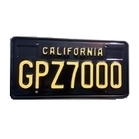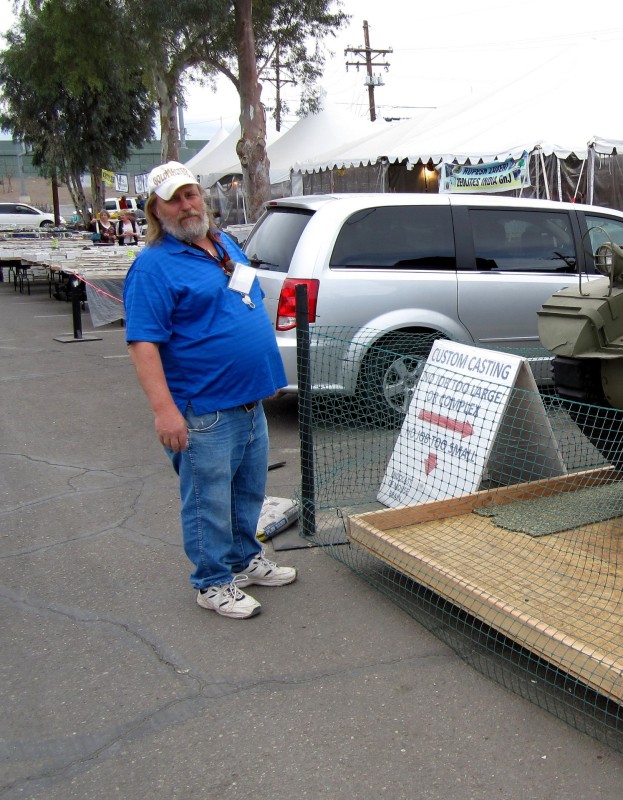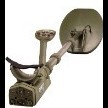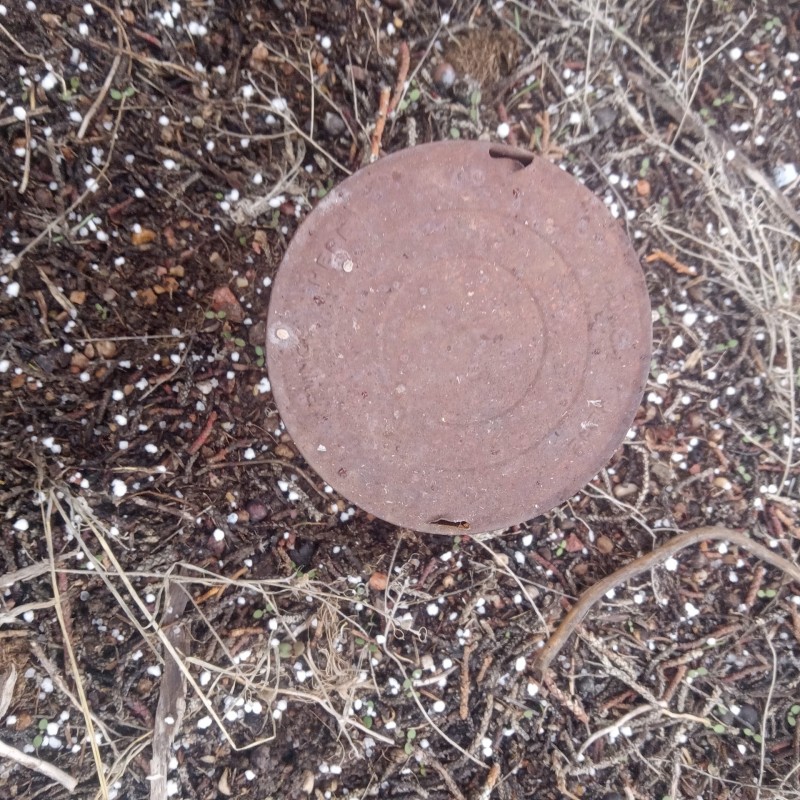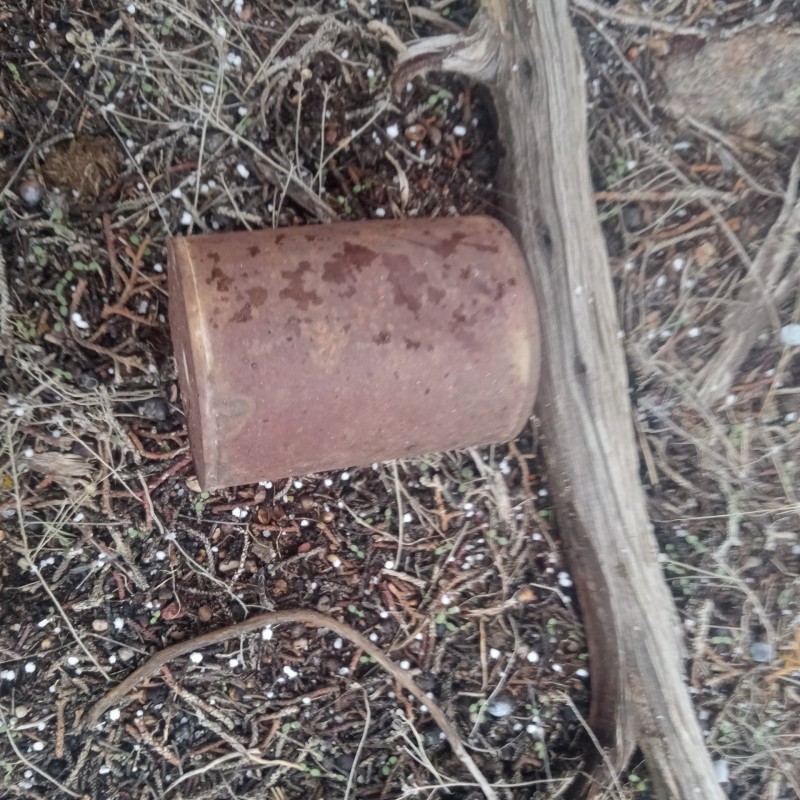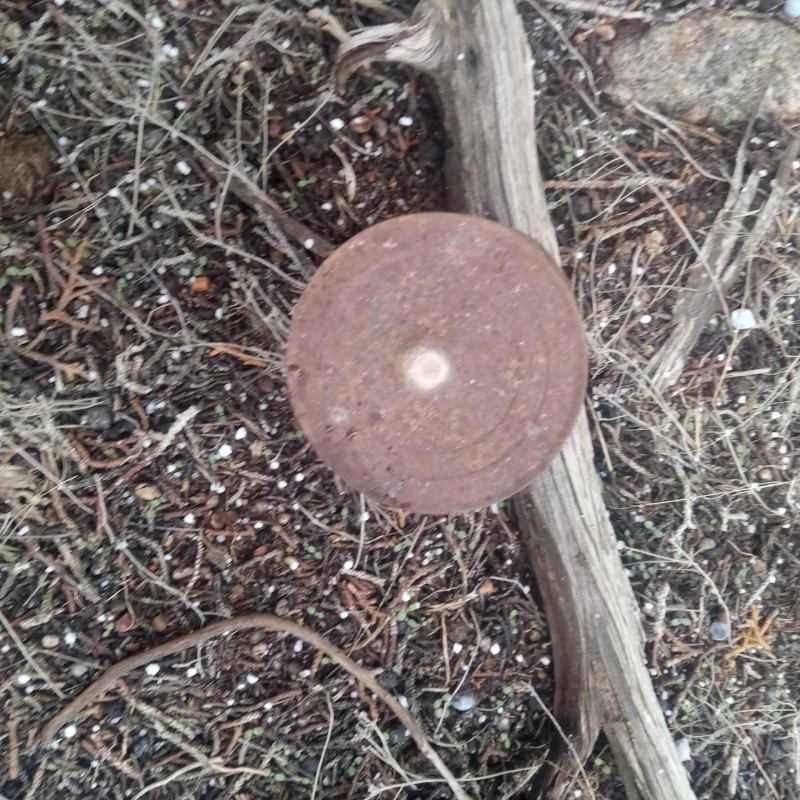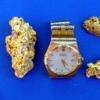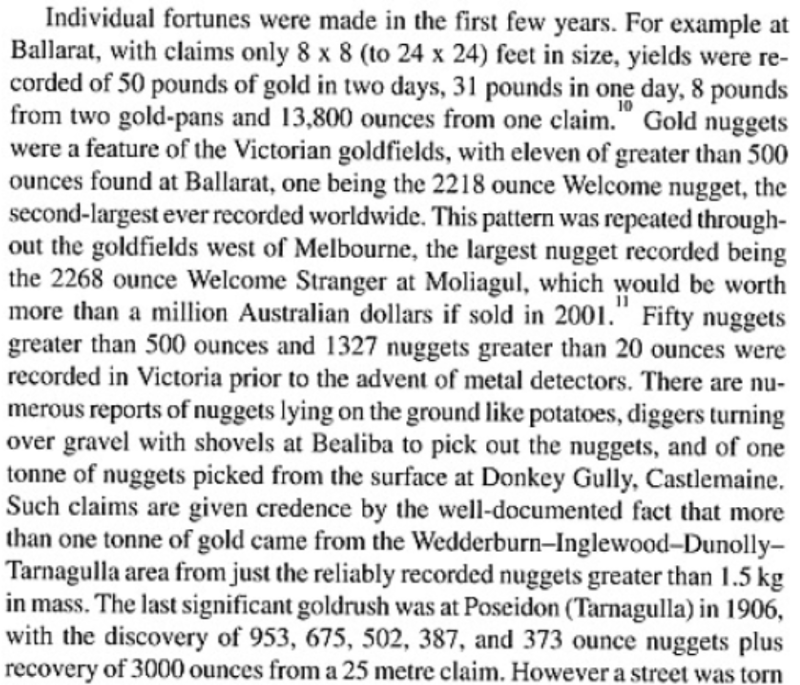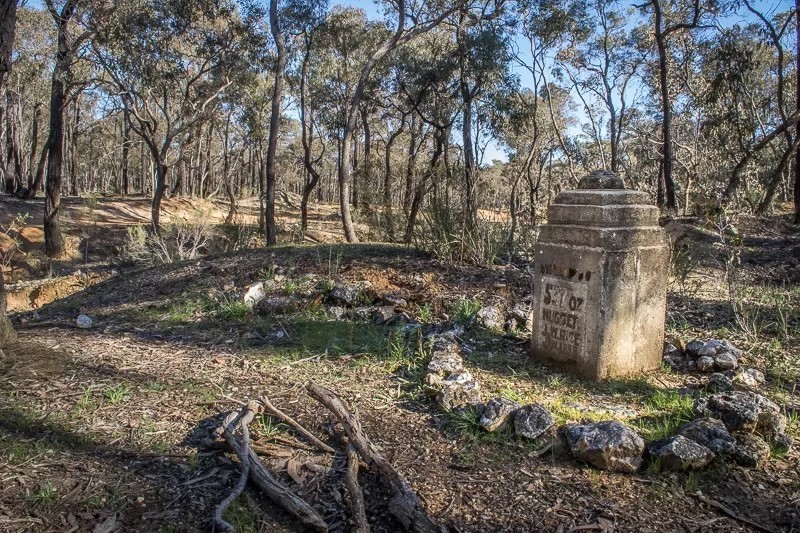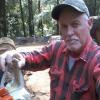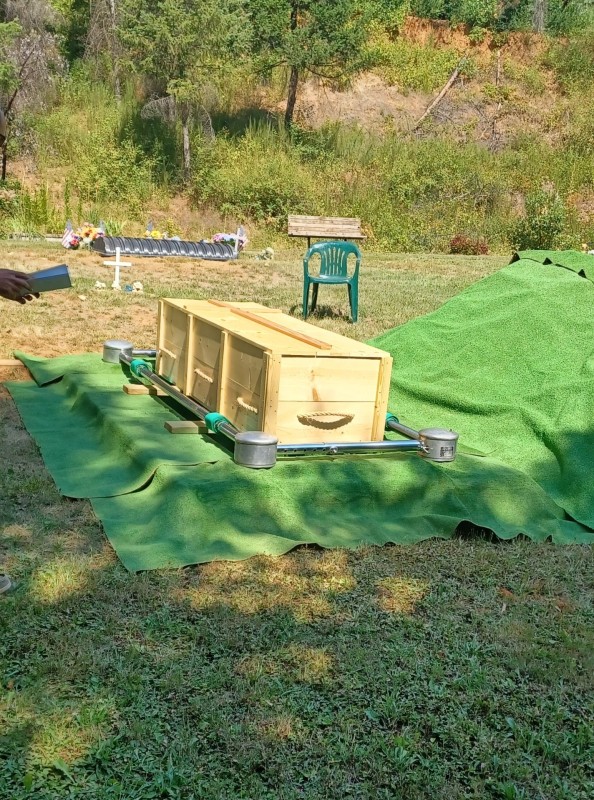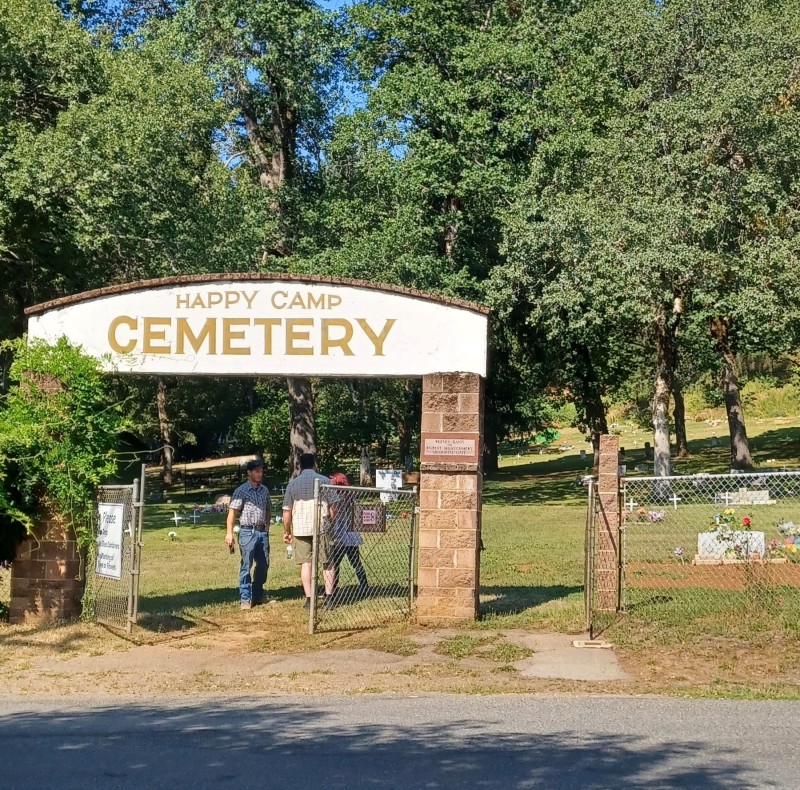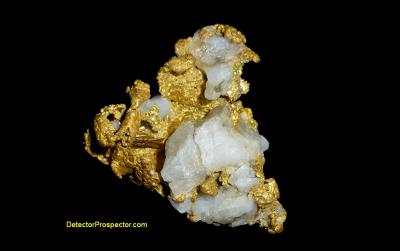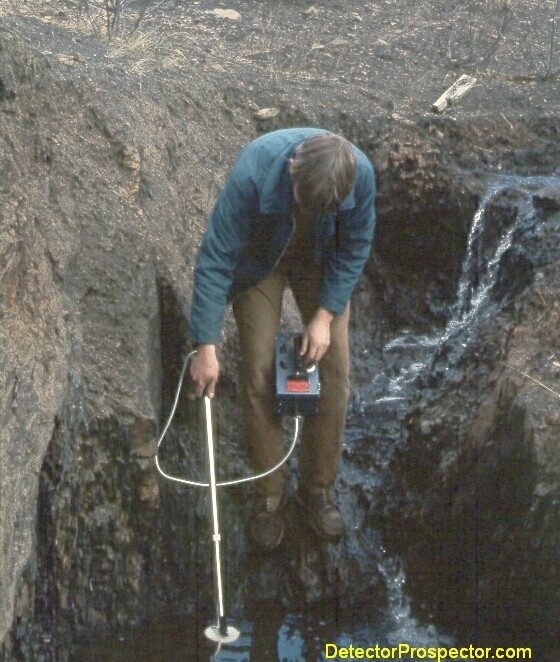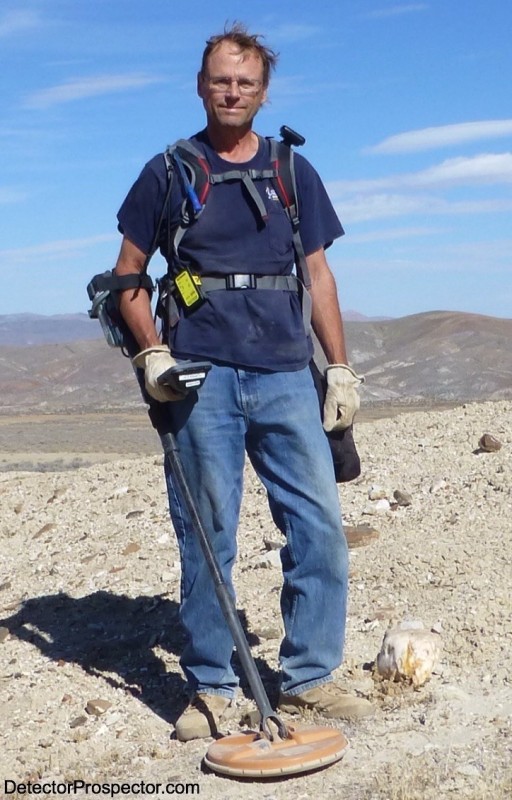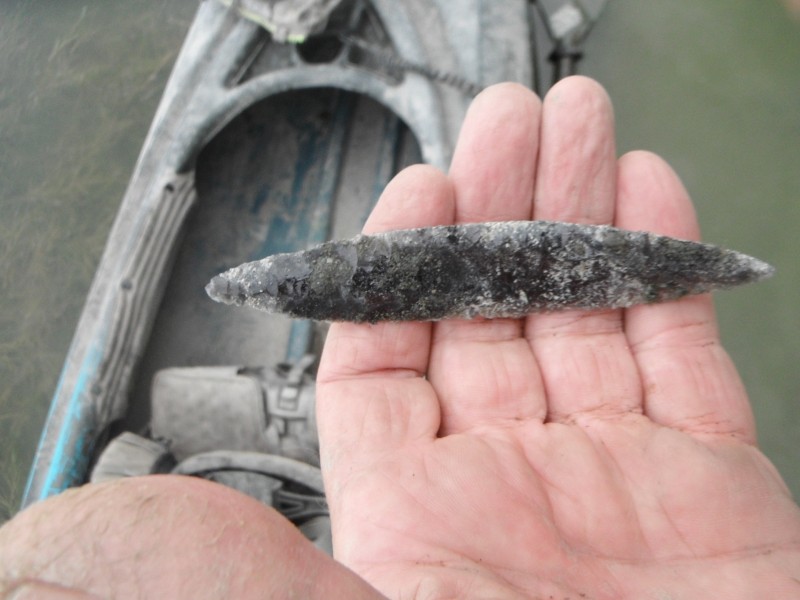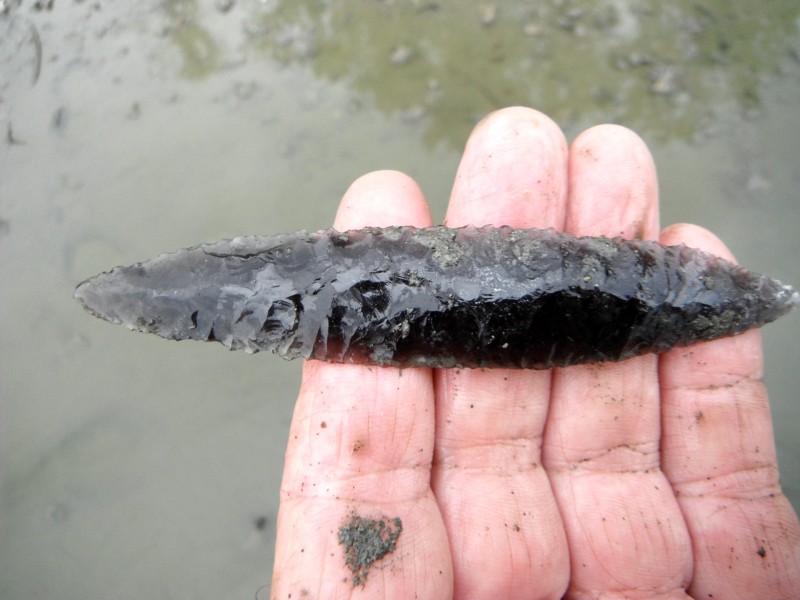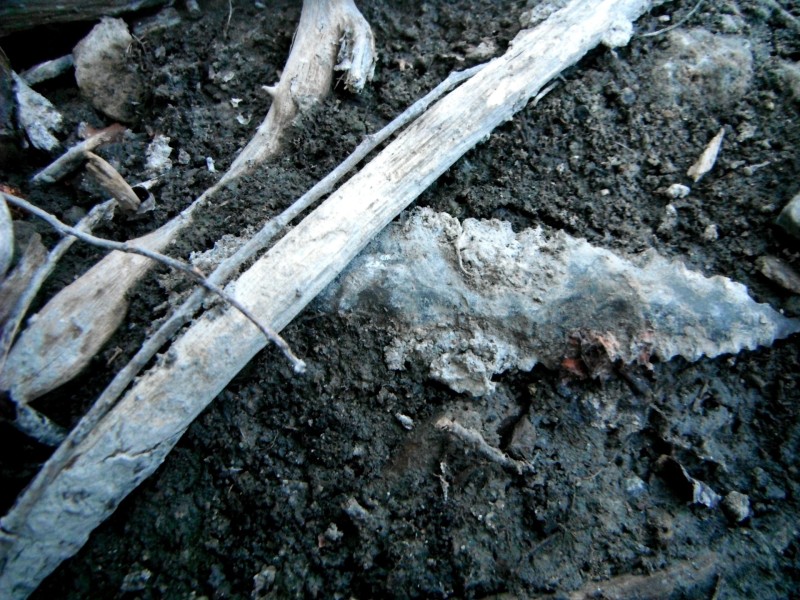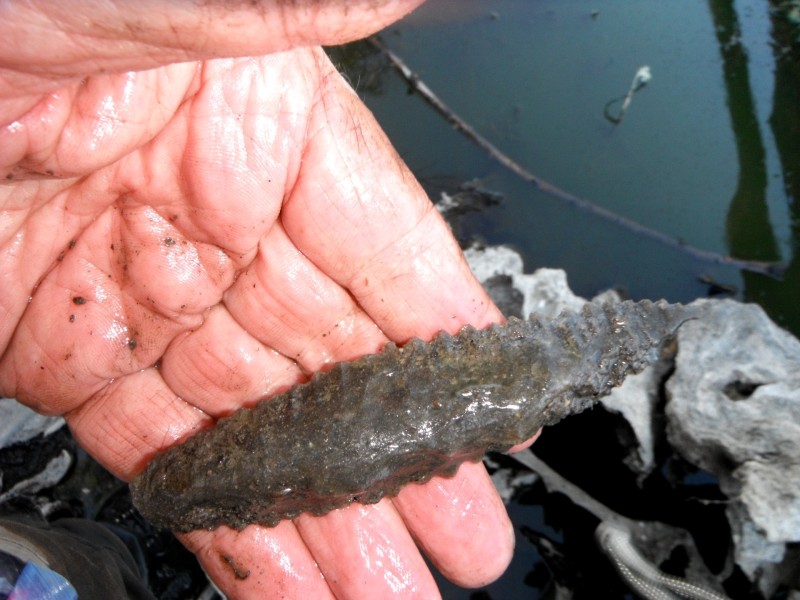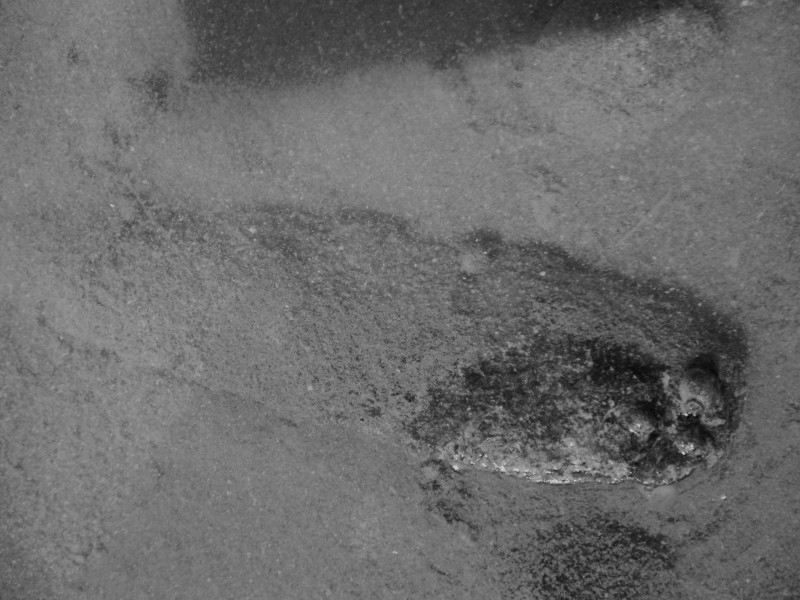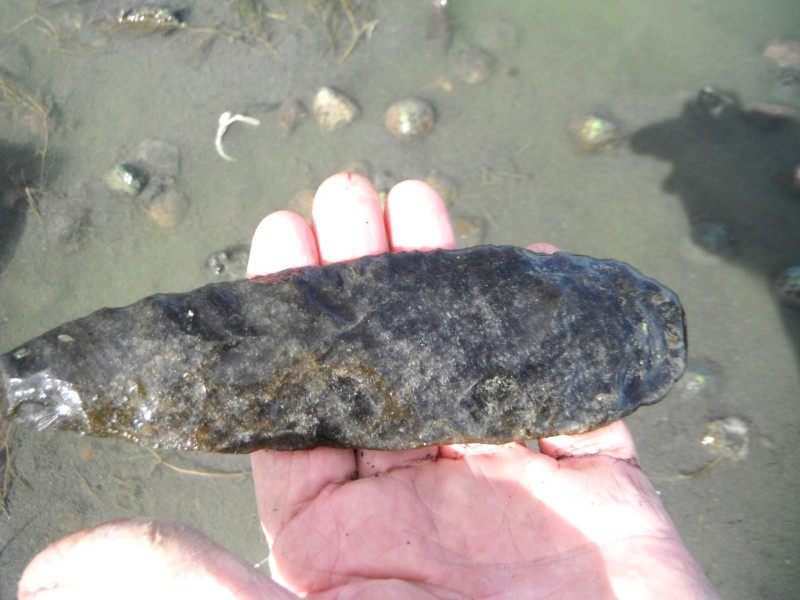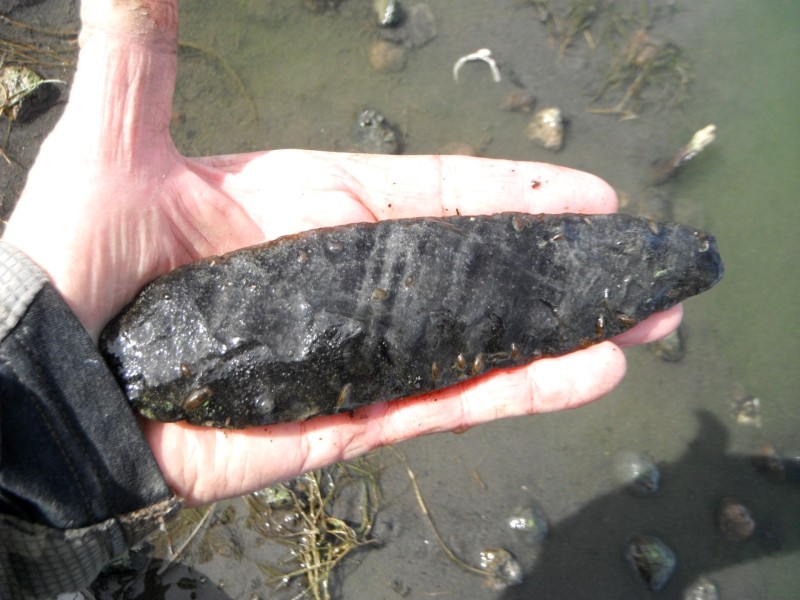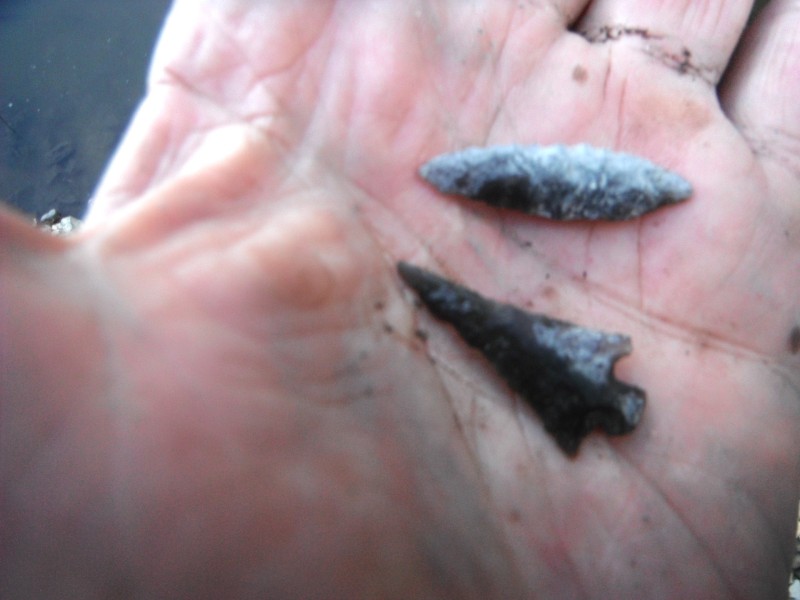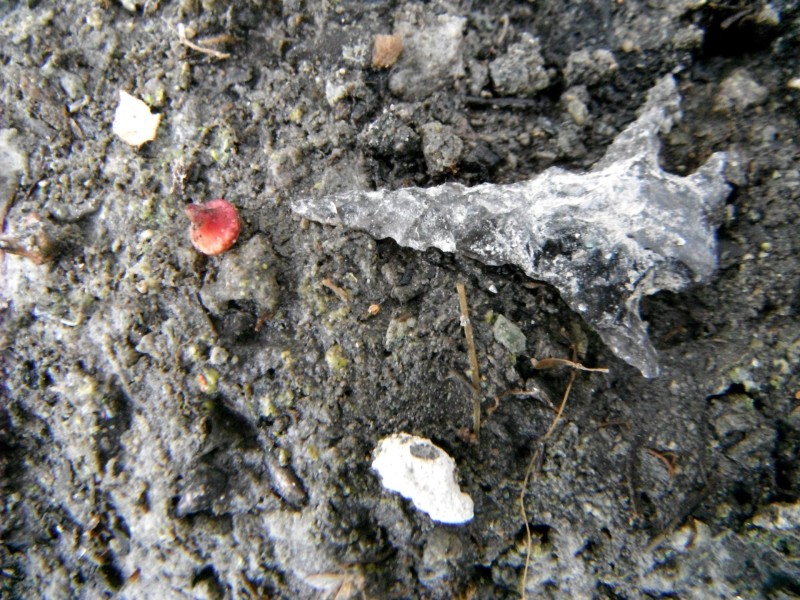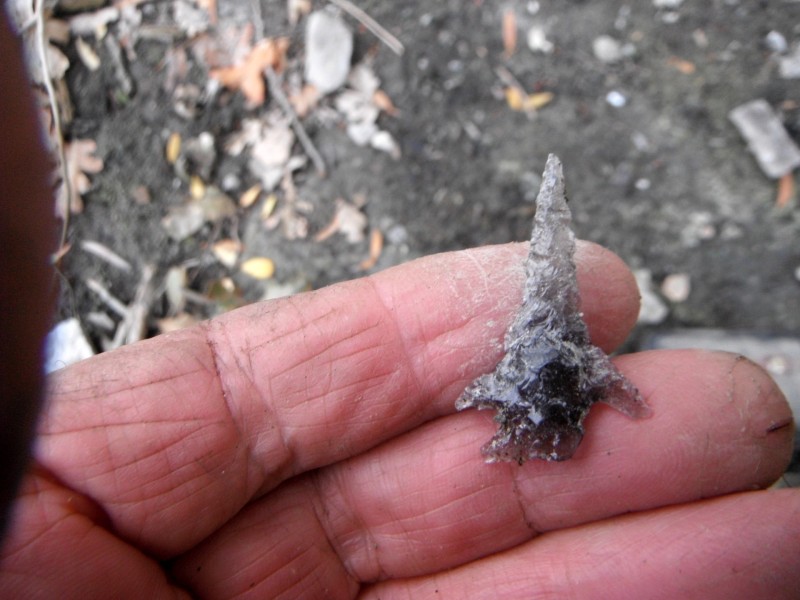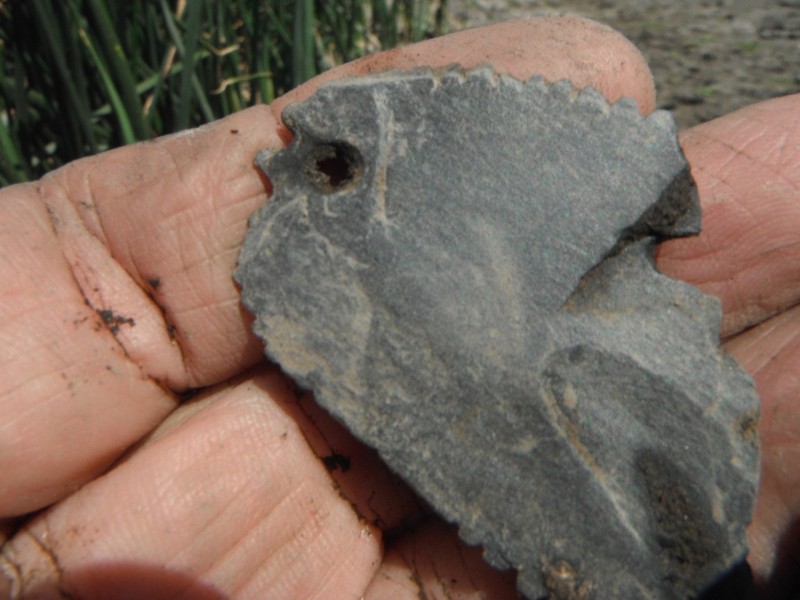Search the Community
Showing results for tags 'history'.
-
This is a pretty big loss. I can't imagine anyone using the real nugget rather than a picture at such a highly advertised event. It is certainly not the fault of the dealer but be careful out there! https://www.foxla.com/news/massive-gold-nugget-dating-back-california-gold-rush-stolen-long-beach
-
- 2
-

-

-
- california
- history
-
(and 1 more)
Tagged with:
-
A lot of the Arizona prospectors and other western Prospectors will remember John "Goldmaster" Blennart, AKA "John B.". He passed away last Monday the 11th. I lost another old prospecting friend about a week ago. Enjoy the time you have as none of us are here forever.
-
I have a pile of SD cards that I started looking through. Every time I have an outing I put a new SD card in my camera so I have plenty of room for videos. Which is crazy because these cards hold so much. So this guy has been a very close friend of mine since the beginning of when I got into this. He's a fellow Minelab dealer. He's a good Christian, he's gives fantastic support to his customers. He's invited me to detect on his claim. I was there when he got married and I have watched his daughter grow up from birth into a beautiful young lady. This man is just an all around nice guy and you can never go wrong dealing with Rob Allison. This picture is of Rob and his hunting partner Dennis and I. Picture date May 2013 These next two people are also dear to my heart. Both Minelab dealers. I've known Gerry McMullen forever. He has single handedly probably trained more people how to use a metal detector than all of us other dealers put together. Gerry is a no-nonsense guy, former Marine with a very dry sense of humor. I think Gerry and his wife Michelle and my wife and I have been all over the world to every Minelab annual partner conference that has been held. You can always count on Gerry to help you out if he can. Need a machine for customer, and Minelab is out, Gerry is always willing to loan you a machine so your customer is not disappointed. Gerry continues to be a driving force in this industry. He also received Mienlab's coveted EAGLE award for outstanding dealer of the year. This next person was known as the Gold Lady. Retta Atkins was such a joy. She was funny as hell and sort of a miniature Dolly Parton. If you didn't know her personality I can explain it this way. If Dolly Parton and Larry the Cable Guy had a baby, that was Retta. Unfortunately about a year and a half ago Retta and her boyfriend Darren were brutally shot and murdered in a home invasion. To Retta's spunk and spirit she got off a shot and wounded the assailant in the shoulder. But that didn't stop him from chasing her into the bedroom and emptying his gun. The intruder was looking for gold and obviously had insider information regarding Retta and her business. The world of metal detecting is a sadder place without Retta Atkins in it. She was a very close friend, we probably spoke every week. She is missed and remembered by all that knew her. They thought they had caught her murderer in a shoot out in which the suspected assailant killed himself. Later it was discovered that was not the person when they arrested the person who was responsible for their murders. This individual was found with evidence taken from Retta's home and had a healed bullet wound from where he had been shot. Daniel Matthew Avila, age 25 was arrested in March of 2023 when he was involved in another home invasion and the bullets from that scene matched the bullets from Retta's home. This picture is of Gerry McMullen and Retta in Sunset Park in Las Vegas Nevada when we were being trained by Minelab on the then new and yet to be released CTX3030. Picture date May 2012. The other gentleman in the picture is Greg Johns a former tech with Minelab from Australia. I think Greg has gone on to other pursuits. If my memory serves me correctly he purchased a large ranch in Australia which was just amazing in terms of the scenery. I hope he is doing well. Thank you all for your amazing friendship over the years. In case you're wondering I'm not going anywhere, but I'm getting that age where I have a heck of a lot more history that I do future. These folks have been part of that memorable history that I have had. Thanks guys, and God Bless You Retta. Doc
-
Just came across this on Stout's Standard Blog... https://stoutstandards.wordpress.com/2024/01/18/a-montage-of-emotions/#more-51626
-
I found this an interesting read: “Gold Seeker”, a gold rush journal by Jean-Nicolas Perlot. If nothing else the book provides some insight into the primitive conditions these California prospectors found themselves in the 1850’s. In addition to the mining techniques employed there are a few clues regarding what to look for while out detecting old mining sites.
-
I was with Compass Electronics forum, since I believe 1996 time period. It changed hands, brought in new operating software, I had READ ONLY access, no access to POSTING, I complained, no success in getting it changed, so decided it had technical problems, so deleted all of my posts there, delected all of my postings, delected any technical material I posted as well, and then checked, and I was out of it. So I left it saddly. But it was no my fault, it was modern software I think. Not sure right now, but I am moved to here. This is my main location. I used to work Colorado, all the gold producing areas, and specifically the Cripple Creek Mining District, but moved further northeast, longer distance for driving time, and older now as well, so staying closer now to where I live today. I knew Charles Garrett, knew Ray Smith his brother in law, dealer with both of them. I knew George Payne, met him in each place he worked, knew him personally at Tek Ltd, Bounty Hunter, Compass, and other companies as well. I knew the guy who ended up with National Treasure Hunters League, but forgot his name right now. He made a trip to my downtown store, and set me up with Fisher electronics. I knew Ken White SR, even though he did not have the SR in his name, never knew his son, was a dealer for Whites Electronics, and Ken White was the friendliest person in metal detectors. He fixed all of my Whites Electronics machines I took in with trades, and never charged me a dime, nor charged me any return shipping. He said, "It has my name on it", and he wanted it in the final upgrade, and that was okay with me too. I knew Ron Mack at Compass personally, he flew to town, took me out to dinner, offered me a dealership, but I had to turn him down as it had a stipulation I had to give up my real estate business, and I had a good running two real estate offices, and I was the Operating Broker for the entire business, so I kept it until selling out to my other partner. So here I am, knowledgeable regarding placer gold operations, knowledgeable regard gold, silver, and other chemical refining. That should be sufficient bragging so I stop here and now. I also do a bit of writing. I do not like or use English Composition, I write like I speak. I stuck in to a story about the history of Colorado Springs, CO some historic finds I made, so my first posting, is some ENHANCED PHOTOS in the booklet, which I did for fun, never printed it, or sold any copies, I gave them away to people for free. So here today is myself. And here for my first posting, is the free historical story, of Colorado Springs CO, and inserted into it, is some of my historical finds... Enjoy it, I did making it! Melbeta
-
Came across this Monument way back in the early 1980s got a signal about 75 yards away from it. I started digging a hole with high hopes. That hole was the deepest that I have ever dug for a target. 2½ feet deep and all I got was an old axe head. The photo show some of the ground type I search in Maryborough Vic. Aus.
-
As a teenager (over 60 years ago) 4 of us explored this mine which was only locked off in some dangers spots. I panning in the area when I got my car driving licence, this was start of self prospecting with out others. This YouTube goes for 45 minutes and worth every minute if you are interested in history in Victoria Aus. and describes advents and how they were solved. This is the area of my old post.... A-bushwalk-though-walhalla-gold-area-with-grandkids
-
Jerry Burnett was one of my mentors in gold mining. He began gold mining as a small boy. On YouTube look up the "First Class Miners" channel, and scroll to the video showing "Jerry's Historical Gold Prospecting" photos. You'll see Jerry at various ages, plus Dick Delahanty, and some Area 51 Gold. For me, the video is a trip down memory lane. HH Jim
-
Hello all. Jim would be humbled by the kind words and comforting sympathies for him and to his wife Linda on the forum. I traveled over the Klamath / Siskiyou mountains yesterday for the graveside service for Jim Foley. It’s about 100 miles from my house to Happy Camp, providing a quiet early morning drive through beautiful country, allowing me to remember Jim. It was comforting. Jim was laid to rest towards the top of a gentle slope overlooking the small local cemetery in Happy Camp, Ca. It was a small ceremony with folks from his church in Yreka, his family, including wife Linda, daughter Nicole and husband, son Jim Jr. and 4 fellow prospector/miners. The simple casket was made by a friend out of local pine with natural rope handles and a cross on top. Six of us unloaded the casket from the back of a pickup and carried it to the burial framework. Family and friends spoke fondly of Jim and his life. Some fine recollections were said about his mining/prospecting in Alaska as well here in northwest California. The minister then spoke of Jim and his commitment to his church and faith. It was really nice, informal. Dave McCraken and I were chatting quietly as we all gathered around the casket. I said to Dave, “ look at that pile of good red dirt from Jim’s grave, what do you think?” Dave says, “well, it’s hard to tell, you can’t see the grey layers where the gold would be with it all shoveled into a pile like that.” We were kinda smiling at each other when a young man sitting with Jim’s family (son in law) said, “what do you guys think, paydirt?” Like I said, it was real nice, Jim would have liked all of it. Mike
-
Many of you here on this forum know him or have hunted with him or have purchased handmade gold jewelry from him. My friend Steve Wandt passed away this past Monday evening. I don't know the full details of his death or arrangements. He was a good friend and fellow prospector as well as a highly skilled metallurgist/fine jewelry maker. He was also a patriot and an Army combat veteran from the Vietnam era. If I hear more details from his wife Dee I will pass them along. R.I.P. my friend!
-
This is a pretty good visit.
-
Man, what a ride! I got my first metal detector when I was 14 years old, a White’s Coinmaster 4, in 1972 . I was already an avid gold prospector by that time, so I went on my first nugget hunt with a metal detector in 1973 at Moore Creek, Alaska. Moore Creek was to figure very large in my life decades later, but that first nugget hunt was a bust. I panned about 1/4 ounce of chunky gold out of the little gully pictured, but the Coinmaster 4, even with the 4” Gold Probe, simply was not up to the task. I decided there were better ways to find gold and became a serious gold dredger, with my metal detecting reserved for coins, jewelry, and relics. It was not until 1989 that I found my first gold nugget with a metal detector. First try detecting gold with a metal detector 1973 I co-founded a business in 1976 selling gold dredges and metal detectors. I’m retired now but that business is still going strong 47 years later as a premier powersports dealer with three locations. Creating that business with my partner, helping support hundreds of employee families for all those years and eventually converting it to an employee owned company, will stand as one of the greatest achievements in my life. It also was my way to be deeply involved in metal detecting as a profession by being a multi line dealer. That lead to working with most of the major manufacturers first testing, and later being involved on the front end of the development of a number of well known detectors. These include the Garrett Infinium, White's TDI, Fisher F75, Garrett ATX, Nokta FORS Gold, Makro Racer, Makro Gold Racer, Makro Gold Kruzer, plus Minelab SDC 2300, GPZ 7000, Gold Monster 1000, Equinox, Vanquish, GPX 6000, Manticore, White’s/Garrett Goldmaster 24K, and finally Garrett Axiom. Like I said, it’s been a heck of a ride! Eleven years ago I left my home in Alaska to reside in Reno, NV. In some ways I view the few years that followed as “peak detecting” for me. I was deeply involved in GPZ 7000 testing and so had the benefit of being the first to use it on many Nevada and California gold locations. I was in my prime physically, lean, tough, and able to swing a GPZ 7000 from sunrise to sunset without pause. I did just that and spent weeks at a time camped out on various gold patches, and added a couple pounds of some pretty spectacular gold to my safe deposit box. In my prime In the last few years I fell into a fortuitous relationship with Garrett Metal Detectors. I kind of wanted to wrap up my career working with the companies by helping a U.S. manufacturer, and Garrett is about the last left that’s serious about staying in the business. It was a wise decision, as they are really great down home people to associate with and I’ve had a ball working with them. The years are catching up with me though. Severe arthritis in both hips brought me to a near stop a few years ago. Having both hips replaced a year and a half ago has given me a second lease on life, and lead to a lot of reflection and appreciation for the gifts I’ve been given in life. Not least being a wonderful wife and a couple daughters, both here with me in the Reno area. My wife still works full time as a teacher, probably will until they carry her out feet first. As such I’ve settled more into supporting her however I can as house husband and help mate. She deserves everything I can give her at this point for putting up with me and my nonsense. A real gem for sure. Metal detecting is just not what it used to be for me. I admit I’ve been spoiled, and got to live through the very best years that detecting has to offer. I’ve found many pounds of gold with a metal detector, including two 6.5 ounce gold nuggets. I lost count of the 1-3 ounce nuggets I found. Piles of gold and platinum rings. My best coins are from Roman times and into the 1700s. My best relic is a 3500 year old Bronze Age axe head in good condition. I’ve metal detected in many states and countries around the world, and have met and worked with many movers and shakers in the metal detector industry over the years. Yes, quite a ride indeed, and one that I was wise enough to document with stories and photos over the years at Steve’s Mining Journal. My memory for the past is not the greatest, so I wrote those stories as much for me as anything, and I’m very glad now I did. Check them out if you are interested, there is a books worth of stories there. I don’t believe at grasping at things, and long ago decided I wanted to age gracefully, accepting the changes that life brings. I’m of an age and of a mindset where I am grateful for every day I have now, and very satisfied to have lived life well and to the fullest. I’ve seen and done amazing things, and even my darkest moments I see now had silver linings. It was not all easy, and frankly I’m lucky to be here. There were times in the depths of alcoholism when I thought of just ending it all. Yet now, many alcohol free years after rehab I am grateful for my time in darkness, as it’s given me perspectives and humility I never would have had otherwise. I don’t want anyone thinking I’m some kind of super duper person when I tell my life stories. No, I’m just a regular Joe that was pretty clueless about a lot of things, and if I succeeded at all, it was as much despite myself as anything else. Somehow it all worked out, and I’m as content and as happy as I think it’s possible to be. When it comes to gold prospecting and metal detecting though, I am pretty much wrapping it up and putting a bow on it. My focus now is more on my wife and family, my garden and my four lovable wiener dogs, and quite a bit of time spent playing RPG games on my computer, a guilty joy I avoided for years. I’m certainly not done metal detecting and gold prospecting, but compared to the all consuming thing it was ten years ago, now I’d say I’m a casual detectorist just looking to get out now and then. I won’t say no when things come my way, but it’s no longer something I’m actively pursuing. That’s it really. I just wanted to reflect a little, and also explain why I’ll be less visible in the metal detecting world than in the past. I’ll be here, keeping things running, posting now and then. But by and large where the forum goes is dependent far more now on you all than on me. As long as people are interested and keep posting I’ll invest my time and a little money in keeping it going. I want to put up my personal finds gallery, my own little online museum, so will get around to that sooner or later. Other than that, thanks for your interest and posts on the forum as it’s the people posting that will keep it alive. Best wishes to you all. Steve Herschbach Not close to being the largest but perhaps the nicest gold nugget/specimen I ever found, 1.83 ounces in 2014 with a Nokta FORS Gold…
-
Some Interesting Finds From Last Fall And The Long Wet Winter. Pictured Above And Below Is A Very Delicate And Translucent Obsidian Curved Knife Blade. Below Is Another Blade Much More Stout And Serrated Notice How Some Of The Artifacts Take On An Almost Chameleon Effect. Below After A Wash. Next A Very Large Blade. Below Are Bird Point (So Called) And A Very Small Micro Blade (Scalpel) The Next One Is One Of My Favorite Forms.I've Found A Handful Through The Years. The Final Piece Is A Real Crier A Damaged Bird Adornment Or Charm Carved From Slate. Thanks For Looking.
-
I hope you don't mind Steve. How interesting to read Monte's history in detecting. I started in 1980 with a A.H. Pro Electronics VLF/TR detector. Quickly moved onto a 5000D series 2 Whites detector. I expect my getting old I have forgot much. Those days of pockets full of coins, me with a flashlight to continue into the nights. I knew a guy who discriminated out nickels just to beat having to dig pull tabs. Recovered coins with a screwdriver, small trowel for the deeper ones. I remember in the 60's and 70's the parks were full of people all weekend long. By the 80's people didn't go to the parks like those older days. When I started you still had to to wait for the weekdays or nights to go out detecting, Kids were a pain in the neck. Iron bottle caps were as bad as pull tabs if not worse. Time has rusted those away leaving little pockets of rusted iron. If you wanted to dig Indianhead's you had to dig those bottle caps. That Whites detector it seemed signals were dig or don't dig where today you have to do more investigating. Depending on how much time you want to spend digging. That detector didn't have audio ID, But when you went over silver, you knew it was silver. Items I dug back then you don't see any more, not very often. When was the last time you dug a "Church Key" Brass pot pipes? Many womens hem weights, Boy scout neckerchiefs? a lot of pocket knives, sure dug a lot more gold and silver rings. I had to learn the detector without anyone helping me. I really never learned it and all it actually was capable of. There was no internet, got some help with the treasure magazines, Eastern and Western. We didn't have pin pointers, Those old blue box White's were a ton of weight, 14 AA batteries lasting maybe 10-12 hours. The closest dealer to me was White's of Minneapolis, 50 miles away. I knew only one other local person in my area who detected. He used a Bounty Hunter which at the time was a quality detector. Reading Monte's history, enough to write many books, Glad I can search thru them. Detecting has been a very big part of my life. Well enough of my rambling on of the "Good ol days"
-
Hope you enjoy these two YouTube Video
-
I am interested in the history of White's Electronics. So, just for fun I have decided to start researching their history. This is just a personal interest project for me. I have found just a few newspaper articles, some patent numbers and have or have reference to a few of their brochure packets. I am interested in all of their history, from the inception, through the geiger counter phase, why they started making metal detectors, when various models were introduced, etc. to the end of the business. Does any one know of any written history on the company or does anyone have any references or links to references that they are willing to share? PM's are welcome. Thanks in advance for any help.
-
I learned something from this story. I never imagined. How one woman helped start the California gold rush (fox40.com)
-
Just Read on another forum that Monte Berry passed away so thought I would share very knowledgeable and respected metal detectorist
-
Passing of a giant, one of the best the industry ever saw…. “With pride and gratitude we announce that, after 57 years, Western & Eastern Treasures magazine ceased publication with the December, 2022 issue. Over the last few years, I have happily observed the detecting industry begin to reach a much larger audience. This is primarily due to the popularity of online short and long form videos. Their creators can share finds and experiences almost instantaneously. As encouraging as that is, it was time to come to terms with the fact that the medium in which we delivered our content (magazines both print and digital) belongs to a shrinking market. It has been an honor to assume the role of Managing Editor of Western & Eastern Treasures. My grandfather, Houston (Dick) Burdette, was the original publisher. My mother Rosemary Anderson and father, Steve Anderson, deserve more praise than I can articulate here. Without both, Western & Eastern Treasures would not have become the respected and popular publication we all know today. To our dozens of advertisers, hundreds of contributors and, most of all, our thousands upon thousands of readers I say - Thank You.” Sincerely, Logan Anderson Managing Editor Western & Eastern Treasures
-
I was just informed that "Western & Eastern Treasures" magazine has ceased operations, primarily due to competition from YouTube channels. My last article therein was my Field Test of the White's Goldmaster 24K, which appeared in the October 2018 issue. Bummer.

